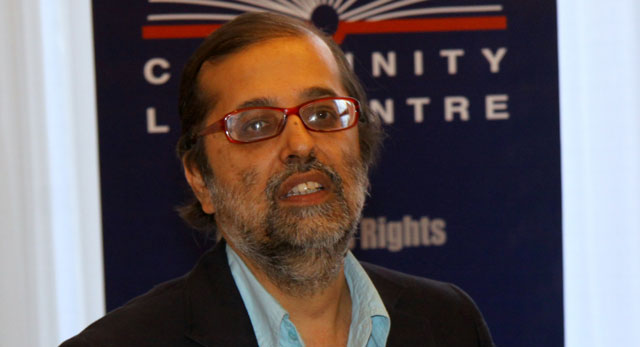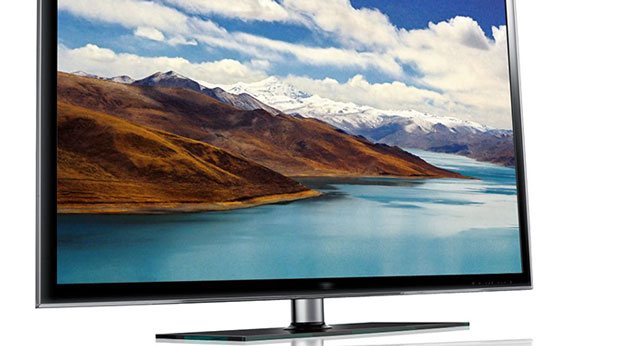
Cabinet’s decision this month to mandate the use of a control system in the set-top boxes government will subsidise for poorer households has led to a great deal of confusion in South Africa’s broadcasting industry.
The decision largely went in favour of e.tv, which has been lobbying hard for a control system in the set-top boxes to allow free-to-air broadcasters to compete more effectively with MultiChoice, which, along with the SABC, is dead set against the idea.
Although MultiChoice is not commenting, it’s understood the pay-television operator is seething at cabinet’s decision, which was led by communications minister Yunus Carrim following extensive consultation with the industry and with his colleagues in cabinet.
MultiChoice has argued that including a control system would result in taxpayers funding the cost of deploying a set-top box that e.tv and other broadcasters can then use to launch pay-TV services. E.tv has denied it has any plans to offer pay services on the free-to-air boxes.
It appeared from a cabinet statement on the issue that government is intent on establishing some sort of encryption management authority, possibly asking state-owned broadcasting signal distributor Sentech to manage it. However, Carrim has denied this.
In a recent interview, Vijay Panday, chairman of the electronics manufacturing division of the National Association of Manufacturers in Electronic Components (Namec), warned that Carrim could be acting ultra vires. In a recent high court challenge brought by e.tv, a judge found that the minister had “no legal power to prescribe or make binding decisions relating to set-top box control”, he said.
“We respect cabinet’s decision, but we need to understand how a judicial ruling that says the minister has no right to make a call on this matter has been ignored,” Panday said. “Is he in violation of a court order?”
TechCentral editor Duncan McLeod asked Carrim to comment on this and to answer some of the more pressing questions that have been raised since the cabinet meeting.
TechCentral: There has been a suggestion that government didn’t have the right, legally, to make a decision over management of a control system or conditional access — I understand the terms to be interchangeable — following the recent high court ruling against former minister Dina Pule. The court said that the minister had “no legal power to prescribe or make binding decisions relating to set-top box control”. It’s been suggested that in making decisions around set-top box control, that you could in fact be acting ultra vires or even in contempt of a court order. Your reaction?
Yunus Carrim: But we haven’t made a decision about the management of a control system. Nor do we refer at all to conditional access or encryption as methods of implementing set-top box control. We are saying that broadcasters are free to decide whether they want to use control or not. There is no compulsion.
So, I can’t see how we are going against the court order. Furthermore, we have proposed generic control, which refers to any system which can be used to control the functions of a set-top box. We are not proposing a particular or specific system.
The aim of the control is mainly to protect government’s investment in the subsidised set-top box market and the local electronics industry.
This is how it’s put in the 6 December gazetted version of amendments to the broadcasting digital migration policy: “To avoid challenges in implementing the digital migration programme, caused mainly by differences between broadcasters and also between some manufacturers, the use of a control system is not mandatory. However, the set-top boxes will have a control system to protect Government’s investment in the subsidised set-top box market and the local electronics industry and, with rapid technological changes, for future use by broadcasters who might not want to use it on implementation.”
But see also section 5.1.2.7(A) of the gazetted amendments: “To avoid subscription broadcasters unfairly benefitting from the set-top box control system, government’s investment in [it] will be recovered from those subscription broadcasters that choose to make use of [it].”
In deciding on government policy, we took the following criteria into account:
- The need to begin implementing the migration as soon as possible, given that South Africa is five years behind schedule, the International Telecommunication Union’s June 2015 deadline is looming, and there is an urgent need to release radio frequency spectrum.
- Ensure that the government subsidy is used productively.
- Stimulate the local electronics industry and create jobs.
- Benefit emerging entrepreneurs.
- Reduce prospects of the South African market being flooded by cheap set-top boxes that are not fully functional.
- Best serve the viewers’ needs.
- Protect the interests of the SABC against commercial broadcasters.
- Be sensitive to rapid changes in the broadcasting and ICT sector as a whole.
- Recognise the increasing use of mobile phones, rather than televisions, for Internet and other services.
- Reduce the extent of monopolisation and encourage competition by creating space for new players in the pay television market without them unfairly benefitting from the government subsidy.
- Recognise the majority of the broadcasters are opposed to a control system.
- Reduce the prospects of the possibility of more challenging legal action from broadcasters and entrepreneurs that would hold-up the migration process.
These criteria need to be looked at as a whole without undue emphasis on any particular one as against others.
Importantly, the set-top box control matter relates to broader issues of industrial policy, particularly the need to stimulate the local electronics industry, encourage emerging entrepreneurs and create jobs. It cannot be seen simply as a broadcasting issue. We worked closely with the department of trade & industry on finalising the government’s approach.
The lawyers we consulted are clear that government has the right to make policy on set-top box control, but it cannot prescribe the supplier, the operator of the control system, the type of control system to be used or how it should be managed.

The e.tv court judgement ruled that the management of set-top box control, including the determination of its type and nature and its vendor and operator, rests with the free-to-air broadcasters.
As you know, free-to-air broadcasters have for a long time failed to get consensus on these issues. Even the facilitation process led by facilitators in September this year failed. The 4 December cabinet decision allows for the individual interests of the various broadcasters to be met, particularly in respect of the way the individual broadcasters want their individual broadcasting services to be managed.
Those free-to-air broadcasters that choose to use control will then determine the type of system they require and also the vendor and operator of the system. There is thus nothing in the proposed amendment that prescribes to the broadcasters how their individual broadcasting services will be managed and specifically what control system will be used and who the vendor and operator of the system will be.
I am no lawyer but it seems to me that government has created a policy framework that complies with the judgment.
We were threatened with legal action from several parties to the dispute, and we had to thread a careful path. The policy we shaped sought to address the key concerns of all the parties to reduce the prospects of this.
TechCentral: The recent channel supply agreement between MultiChoice and the SABC specifically prohibits the public broadcaster, through a commercial contract with the pay-TV operator, from carrying any of its free-to-air channels over any broadcasting system that uses a control system. Does that mean that the SABC will be unable to carry its public service channels over the government-subsidised set-top boxes?
Carrim: It would be able to do so. The SABC does not want to use a control system. So our advice is that the agreement with MultiChoice will not be affected. We have been advised that the commercial agreement only deals with the encryption of SABC channels and not with whether the set-top boxes that are used for viewing SABC services have a control system or not.
So, the SABC is free not to use the control system in the transmission and management of its channels, and its agreement with MultiChoice will not be affected.
TechCentral: Related to the above, have you engaged with the SABC about its contract with MultiChoice? Are you comfortable with what the SABC has agreed to, specifically on the issue of not carrying its channels over any sort of control system? If you are not comfortable with the agreement, how do you plan to address the issue?
Carrim: Yes. The government has not funded the SABC to the extent we should. The ANC has for many years now called for the SABC to receive 60% of its funds from the national ficsus. But the current figure is about 3%. So, the SABC felt that it should have a commercial agreement with MultiChoice.
A senior representative of the SABC made it clear that the agreement with MultiChoice is not cast in stone, as it were. If there are provisions in the agreement that are not consistent with the Public Finance Management Act or government policies, they need to be reviewed. But at this stage there is no consensus among the relevant parties that there are provisions in the agreement of that nature.

Our main immediate concerns at department of communications are the long-term financial viability of the projects covered by the agreement and the need for clarity on how the agreement fits into the long-term strategy of the SABC to grow its market share and become more effective as a public broadcaster.
TechCentral: Cabinet says the use of a control system is “non-mandatory”. But what does this mean at a practical level? Will consumers be able to purchase digital TVs with integrated DVB-T2 tuners that don’t have government’s mandated encryption system built in? If so, how will this protect local manufacturers from cheap, Chinese imports flooding the market? As a consumer, what options for digital terrestrial television will I see when I walk into a retail store?
Carrim: As explained, there is no reference to encryption.
A consumer would have the choice of a number of free-to-air digital set-top boxes, all of which will have the South African Bureau of Standards conformance mark, being Sans 862 compliant. Each set-top box will have a control system that will have been inserted by the manufacturers on the instruction of the free-to-air broadcasters that decide to use the control system, in line with the court judgement and the process stipulated in Sans 862.
Channels broadcast without any control mechanisms would be immediately available on the set-top boxes. Broadcasters who use the control system will have procedures for activation of their services.
A consumer will also have a choice of a number of pay-TV set-top boxes. A viewer using a pay-TV box will have access to the pay services provided by the pay operator, the free-to-air services provided by the free-to-air broadcasters that have opted not to use set-top box control and, based on agreements between the pay-TV operator and the free-to-air broadcasters who have opted to use set-top box control, the free-to-air services from the latter.
Our technical advisors have pointed out that, unlike in Europe, South Africa does not have a policy framework on integrated digital televisions (iDTVs). The SABS, I’m told, is developing a standard for iDTV receievers that will be subject to conformance testing. A consumer should buy a set-top box or iDTV receiver that has the SABS conformance mark.
Under European law, iDTVs larger than 30cm must have “common interface” (CI) slots to accommodate conditional access (CA) modules. Thus, practically all the iDTVs in Europe are CA-enabled already. Such iDTVs would be able to process any encrypted digital TV signals in South Africa. If an iDTV does not have the same features as mandated in Europe, then a set-top box would be required to view any channels that are transmitted with encryption, if that is the control method chosen by free-to-air broadcasters.
It should be noted that CI-enabled iDTVs represent fully open-access consumer devices that enable access to subscription services from all broadcasters, irrespective of the CA systems that these broadcasters use.
TechCentral: If I understand it correctly, government is now proposing — as a solution to grievances from MultiChoice — that it, rather than the free-to-air operators, create some sort of CA authority/management company and then charge prospective pay-TV operators for access to this.
No, Government is not proposing the creation of a CA authority or management company. The free-to-air broadcasters are responsible for the operational management of the control system, in line with the court judgment. Government subsidises set-top boxes and these will have a control system inside of them, like all other digital boxes. Government cannot and is not attempting to position Sentech or any other company to be the operator of the control system. The nature, supplier and operator of the control system will be determined by the free-to-air broadcasters.
TechCentral: Given how far behind South Africa is already in terms of migration, why did cabinet not simply go for the simplest solution to expedite the process, namely no encryption based on CA?
Carrim: We considered dropping control altogether, but there were several obstacles. We also had to get a measure of consensus among the relevant departments. The key obstacles were:
- The SABS Sans 862 standard would have to be changed — and this takes an average of six months.
- Concerns that the South African market will be flooded by cheap, low-quality set-top box imports that will not be fully functional and undermine the local manufacturing industry and the prospects of jobs. Just note this, from the chair of the Information and Communication Technologies Authority of Mauritius as an example: “The single most important lesson one can learn from the Mauritian experience is the one concerning the set-top box chaos… You cannot allow the importation of set-top boxes on the basis of price alone because … you land up with asynchronous (start/stop) audio and video problems, impulsive noise, frozen pictures.”
- The free-To-air broadcasters did not all agree to drop control, so any broadcaster wanting to use control could legally challenge the government.
- There could be a legal challenge to government by manufacturers who invested in control system certification and set-top box designs including control and applied for the government tender on subsidised set-top boxes based on the fact that a control system was specified as requirement in the last amendment to the broadband digital migration policy (of 13 February 2012), Sans 862:2012 (Edition 2) and the tender on government-subsidised set-top boxes of 2012.
TechCentral: What are the financial implications of introducing a control system?
Carrim: The cost to the government of control will be about R20 per subsidised box. Broadcasters wanting to use the control will have to pay the government. They will pay the other costs related to the control system.
The goverment’s cost for set-top box control has to be related to the benefits to the local electronics industry and emerging entrepreneurs and in terms of jobs. The South African government, like most governments, has invested in a variety of ways for industrial returns. Government uses a wide range of incentives — tax incentives and rebates; trade measures such as standards and specifications; and strategic tariff policies in support of industrial development. These measures are designed to support the achievement of a range of policy objectives and secure co-commitments from the private sector inclusive of broad-based black economic empowerment; support for enterprise development and competition in the domestic economy; competitiveness upgrading; and localisation and supplier development.
The procurement policies of government enshrined in the amended regulations of the Preferential Procurement Policy Framework Act, the competitive supplier development programme and the national industrial participation programme are designed to support these policy objectives. It is estimated that in its various forms, direct and indirect incentives and tax foregone, this amounts to R7bn/year.

We are acutely aware of the need to deracialise and transform the economy. Our approach certainly caters for emerging entrepreneurs in ways that are consistent with government’s broad-based black economic empowerment policy and related policies, legislation and regulations.
TechCentral: How do you intend dealing with companies and organisations that are unhappy with cabinet’s decisions on digital TV?
Carrim: For a long while, the broadcasters have been feuding about whether to have a control system or not. Both former minister Dina Pule and I encouraged the broadcasters to arrive at consensus, but to no avail. In September, the ministry began a new facilitation process led by a team chosen by the broadcasters to foster a measure of consensus, but, with the parties refusing to make any compromises at all, the facilitators reached an impasse.
Our original aim was to reduce the differences among the broadcasters and then engage with the entrepreneurs in ways that are legally tenable to set up a representative committee to work with government to amend the broadcasting digital migration policy so that we could move quickly ahead. We very much wanted the parties to come to an agreement. But the facilitators were unable to secure even the most minimal consensus.
Government then shaped its policy taking into account what all the parties had to say. What else could we do? The country could not be endlessly held to ransom by the feuding of the broadcasters.
On 5 December, we briefed all the broadcasters on the cabinet’s decision and requested them to make submissions on the 6 December gazetted version of amendments to the broadcasting digital migration policy.
We also suggested a joint technical committee be set up to clarify matters and settle any outstanding differences. They have not responded favourably to this. We remain committed to engaging with them.




